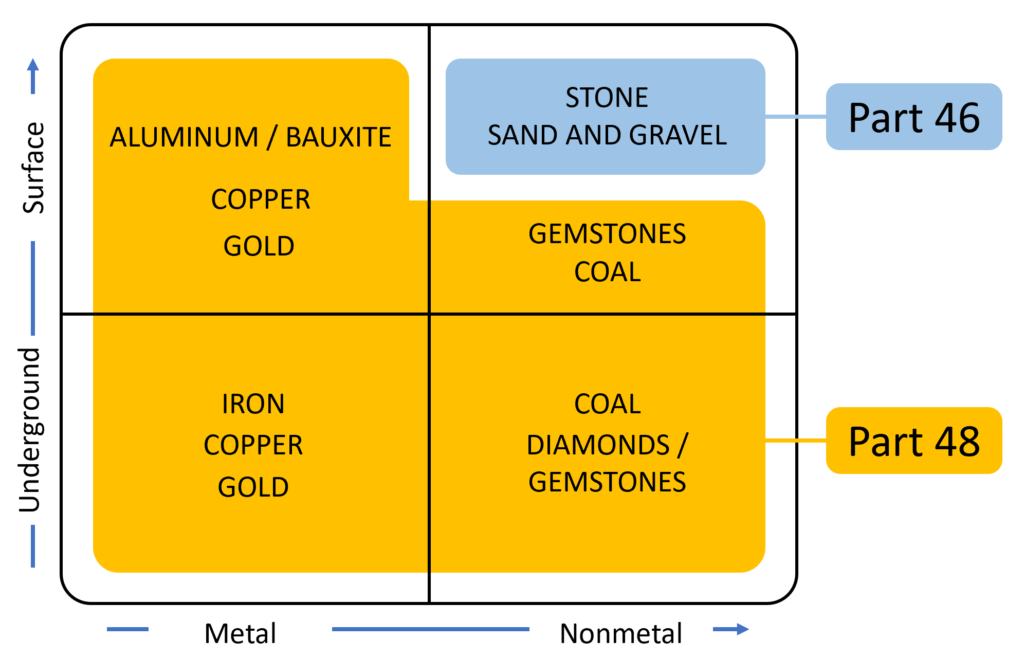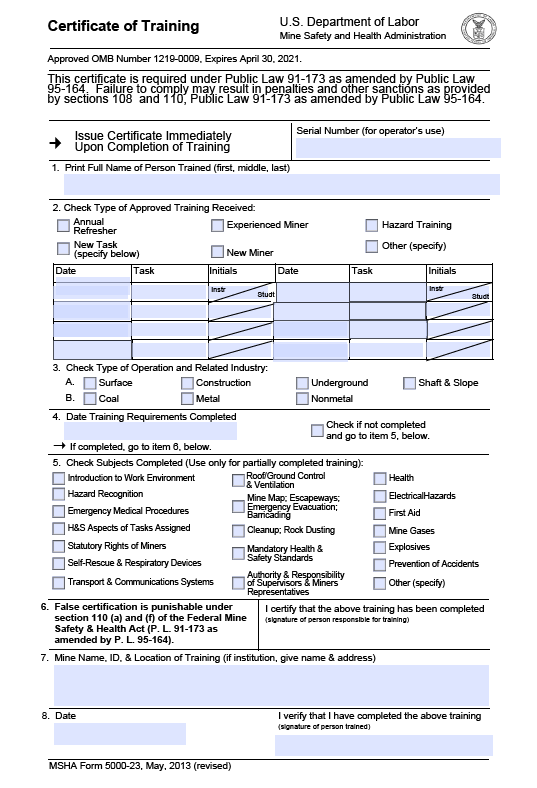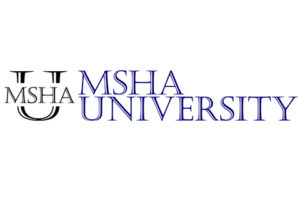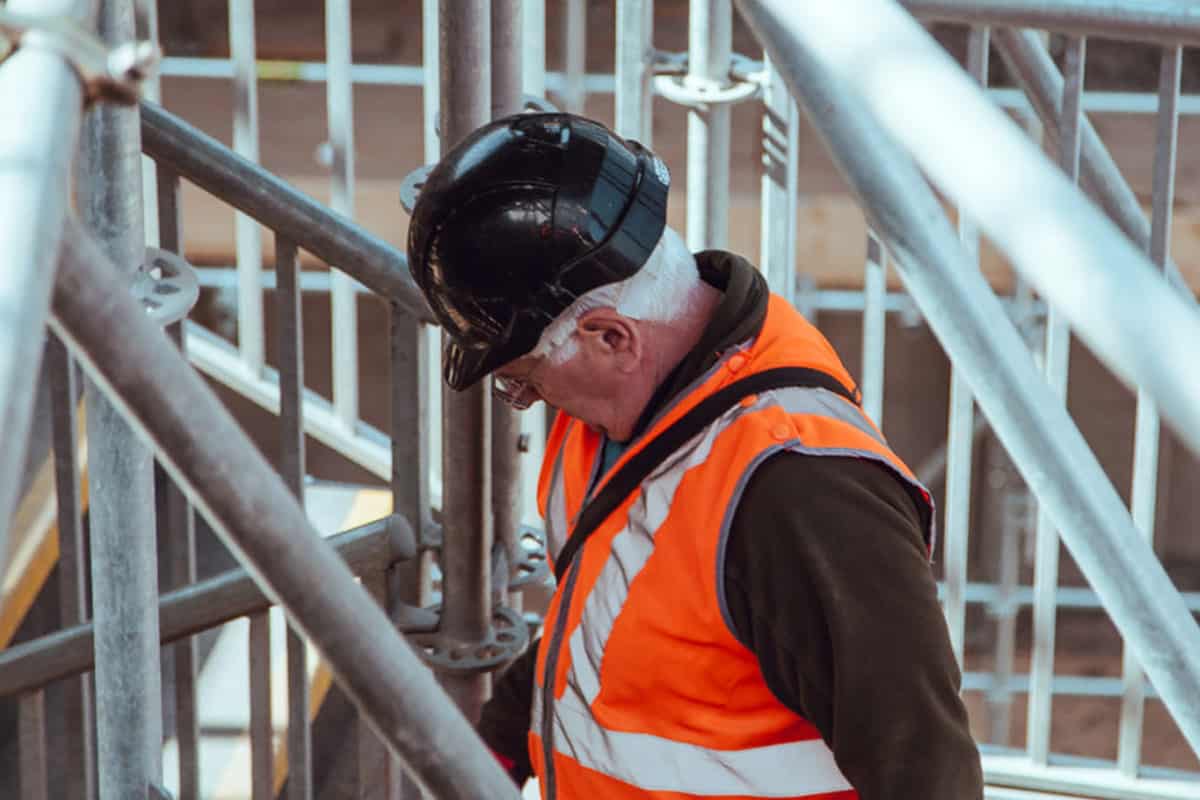If you’re a prospective mining contractor bidding a project or just about to start work at a surface mine, you’ve probably got a load of questions about MSHA training and compliance. You’re not alone. And being familiar with OSHA requirements doesn’t automatically prepare you for the intricacies of MSHA regulations.
So, what are the 7 critical things that mining contractors need to know about MSHA Part 46 Training?
- Know the difference between Part 46 and Part 48 training requirements.
- MSHA requires independent contractors to have the same training as miners.
- You should file for an MSHA Contractor ID.
- Independent contractors must keep all the same training documentation as mine operators.
- MSHA allows for a “tour of the mine” to be a tour of the independent contractor’s facility.
- A sole proprietor can train and certify themselves.
- First aid, tool box talks, and periodic safety training can count toward MSHA’S 8-hour Annual Refresher training requirements.
For an independent mining contractor suddenly launched into the realm of MSHA compliance, life becomes instantly more complicated. But if your business plans to perform work at a surface mine, there’s simply no way around it. You’ll need to train your team based on MSHA requirements and learn how to keep a whole new set of compliant documentation… and then keep it up-to-date annually. It’s a lot to take in. But I’ve talked dozens of independent mining contractors through the process. Like any other federal regulations, the more you know, the better. So, here are the 7 critical things that independent mining contractors need to know to get compliant and stay compliant when working at a surface mine.
1 – Know The Difference Between A Part 46 And Part 48 Mine
The first question I ask independent mining contractors who call for guidance on MSHA training is, “Do you need Part 46 or Part 48 training?” It’s very common that they don’t know the answer to that question. That’s understandable. This is new territory for them. But the two sets of training requirements are extremely different. So, knowing that distinction is absolutely critical.
Part 46 and Part 48 are sections within Title 30 of the Code of Federal Regulations (CFR) that define the training and documentation requirements for miners and independent mining contractors in the U.S.
- Part 46 (Surface: Non-Metal / Non-Coal) – MSHA defines the scope of Part 46 as providing “…the mandatory requirements for training and retraining miners and other persons at shell dredging, sand, gravel, surface stone, surface clay, colloidal phosphate, and surface limestone mines.”
- Part 48 A & B (Underground & Surface Areas of Underground Operations) – MSHA defines the scope of Part 48 as providing “…the mandatory requirements for submitting and obtaining approval of programs for training and retraining miners working in underground mines. Requirements regarding compensation for training and retraining are also included. The requirements for training and retraining miners working at surface mines and surface areas of underground mines are set forth in subpart B of this part.”
Knowing which MSHA regulations you’ll need to comply with is the first step in understanding the training and documentation that will be required for your team.
If the mine where you’ll perform work falls under Part 46 surface regulations, you’re in luck! Part 46 training and documentation requirements are significantly more flexible than those for Part 48 underground mining.
TIP! – Here’s an easy way to tell which MSHA training regulations will apply to the mine where you’ll perform the work –
- If the mine produces coal or metal, it’s subject to Part 48 regulations (regardless of whether it’s underground or surface).
- It the mine produces stone, sand, and gravel at the surface only, it’s subject to Part 46 regulation.

2 – MSHA Requires Independent Contractors To Have The Same Training As Miners
It’s very common for independent contractors to expect that MSHA training and documentation requirements will be less stringent for them, since they’re not miners. However, MSHA effectively places all the same requirements on independent contractors as miners. Independent mining contractors will have all the same compliance responsibilities as mine operators, and thus subject to inspections and citations by authorized MSHA personnel.
MSHA (via the Mine Act) defines an independent contractor as –
- “Any person, partnership, corporation, subsidiary of a corporation, firm, association or other organization that contracts to perform services or construction at a mine… [and are] exposed to mine hazards for frequent or extended periods.”
- “Frequent” exposure is defined as a pattern of exposure to hazards at mining operations occurring intermittently and repeatedly over time. “Extended” exposure means exposure to hazards at mining operations of more than five (5) consecutive work days.
For Part 46, MSHA has set the following minimum training time requirements:
- Part 46 Surface New Miner Training – Minimum of 24 hours of training with no less than 4 of those hours completed before beginning work at the mine.
- Part 46 Surface Annual Refresher Training – Minimum of 8 hours completed no later than 12 months after beginning work at the mine (or since last Annual Refresher).
TIP! – So, keep in mind that if you perform frequent or extended work at a surface mine and are considered an independent contractor, you’ll have to train each member of your team doing the work as New Miners. And each of those individuals will have to maintain Annual Refresher training each following year to remain compliant.
3 – You Should File For An MSHA Contractor ID
While MSHA only requires a contractor ID for companies performing specific types of work at a surface mine, it’s just a good idea to file for one right away.
MSHA requires independent contractors to acquire a Contractor ID when performing or contracted to perform any of the following types of work at a mine:
- Mine development
- Construction or reconstruction of mine facilities
- Demolition
- Construction of dams
- Excavation
- Equipment installation
- Equipment service or repair (for more than five consecutive days)
- Material handling
- Drilling and blasting
TIP! – You can either file for free online with MSHA or submit the Contractor Identification Request Form 7000-52. And remember that on any of the forms you’ll fill out (like the 5000-23 Certificate of Training), you’ll put your company name and Contractor ID anywhere it asks for the mine name and Mine ID.
4 – Independent Contractors Must Keep All The Same Training Documentation As Mine Operators.
MSHA requires that you produce and retain two types of documents related to the required Part 46 training. You must have a written Training Plan and you must provide and retain a Certificate of Training for each independent contractor performing work at a surface mine.
- BEFORE Training – The Training PLAN – This is a written plan that contains effective programs for training miners based on the requirements outlined in Part 46.5 through Part 46.8.
- AFTER Training – The RECORD/CERTIFICATE of Training – This can be either an MSHA Form 5000-23 or other compliant document for Part 46 training.
TIP! – MSHA provides templates for both types of documents. Using these templates is one of the easiest ways to provide information in the format that MSHA prefers.
TIP! – While MSHA allows for these documents to be retained electronically, in the event of an MSHA inspection, you will likely be asked to provide hard copies. So, it’s wise to keep printed physical copies of all documentation.
5 – MSHA Allows For A “Tour of the Mine” To Be A Tour Of The Independent Contractor’s Facility.
MSHA Part 46 outlines New Miner training to include a “visit and tour of the mine.” This can be particularly confusing for independent contractors because a literal interpretation is that they must send their team to a mine site for a tour. This isn’t the case.
MSHA allows for this training requirement to be fulfilled by independent contractors providing a tour of their own facility to the workers who will perform work at a surface mine. This may seem odd, but that’s directly from MSHA.
And it’s not uncommon for the mine operator to provide a tour of the mine as part of the site-specific hazard training prior to performing work at the mine. So, an actual mine tour may still happen.
TIP! – This may be a good opportunity to walk your team through your offices or workshop as part of emergency preparedness training to review evacuation procedures, fire protocols, and locations of first aid equipment.
6 – A Sole Proprietor Can Train And Certify Themselves.
This is another little-known allowance that MSHA offers to sole proprietor contractors for Part 46. When you’re solo, you don’t have the same options to identify a “responsible person” and “competent person” as you would within a larger organization.
So, MSHA allows a sole proprietor to act as both the responsible person and competent person while also being the trainee. In this way, a single person can be authorized to train and certify him/herself.
TIP! – Examples of these types of solo contractors include, electricians, welders, and pipe-fitters. For sole proprietors, online MSHA Part 46 training can be a good option, since all the required topics are typically included. You should also contact the mine where you’ll perform the work to see if you can be included in training they may have scheduled.
7 – First Aid, Tool Box Talks, And Periodic Safety Training Can Count Toward MSHA’s 8-Hour Annual Refresher Training Requirements.
As a contractor, it can be overwhelming to think that, in addition to all of your other annual training, you’ve now got to add another 8 hours of MSHA training to your team’s schedule. This isn’t entirely the case.
If you’re already doing periodic tool box safety talks and annual first aid training, you can credit those amounts of training time toward your 8-Hour Annual Refresher requirement. Just include your normal training into your MSHA Annual Refresher Training Plan. Typically, companies do more than enough safety training within a given year to surpass the 8 hours needed.
TIP! – Keep in mind that the only required topic for Part 46 Annual Refresher training is “instruction on changes at the mine that could adversely affect the miner’s health or safety.” For contractors, this is interpreted as “changes at the contractor’s facility.” So be sure to include anything that could fit this category, such as updates to fire suppression or alarm systems, changes in evacuation plans, or new first aid equipment.
Related Questions
Who needs MSHA Training?
MSHA (the Mine Safety and Health Administration) defines requirements for training and retraining of miners and independent mining contractors in the U.S.
MSHA defines a miner as “any person, including any operator or supervisor, who works at a mine and who is engaged in mining operations. This definition includes independent contractors and employees of independent contractors who are engaged in mining operations; and any construction worker who is exposed to hazards of mining operations.”
MSHA defines an independent contractor as “any person, partnership, corporation, subsidiary of a corporation, firm, association or other organization that contracts to perform services or construction at a mine… [and are] exposed to mine hazards for frequent or extended periods.”
So, if you’re a miner or independent contractor performing work at a mine, you need MSHA training.
What is a 5000-23 Form?
The 5000-23 form is specified in Parts 46 and 48 as the Record of Training document required to “record and certify” that training has been provided and successfully completed.

Miners and independent contractors are entitled to receive a copy of their 5000-23 certificates. These training certificates must also be maintained at the mine site and available for inspection.

